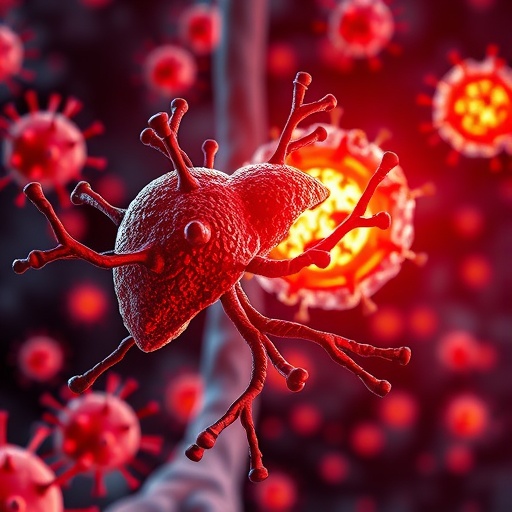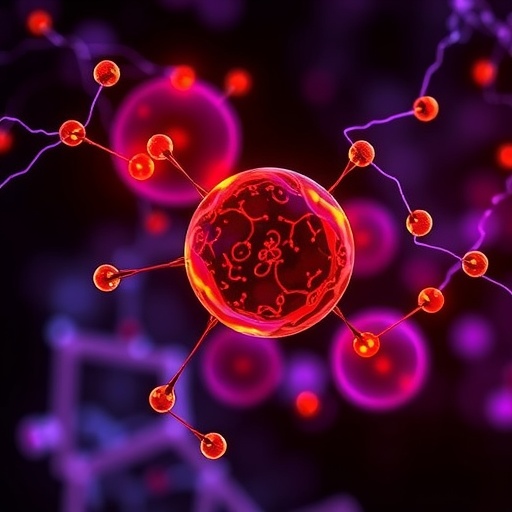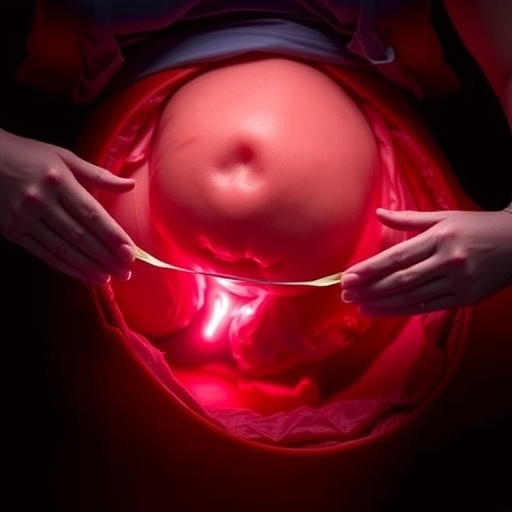
In recent years, radiation therapy has stood as a cornerstone treatment modality for various malignancies, leveraging ionizing radiation to eradicate cancer cells. However, despite its clinical efficacy, the collateral damage inflicted upon non-targeted liver tissue during abdominal or thoracic radiation remains a significant clinical challenge. Radiation-induced liver disease (RILD) is a devastating consequence that can severely limit therapeutic doses and adversely affect patient outcomes. New insights presented by Dong, Wei, Liang, and colleagues in their latest Nature Communications publication shed light on an unsuspected molecular culprit exacerbating liver damage post-radiation: Gasdermin D (GSDMD).
This groundbreaking study intricately dissects the pathophysiological role of GSDMD, a pore-forming protein classically implicated in pyroptosis, an inflammatory form of programmed cell death. Beyond its established functions, Dong et al. reveal that GSDMD orchestrates a detrimental inflammatory cascade that intensifies liver injury following irradiation. By promoting the secretion of chemokines—signaling molecules that recruit immune cells—GSDMD effectively drives neutrophil infiltration into hepatic tissue. This inflammatory influx exacerbates tissue damage, thereby worsening the disease phenotype in murine models.
Radiation-induced liver disease is characterized clinically by hepatomegaly, ascites, jaundice, and coagulopathy, often mirroring veno-occlusive disease. Despite its clinical recognition, the molecular determinants underpinning RILD remain murky. The current study pioneers a mechanistic framework where GSDMD, traditionally studied in infection and autoimmune contexts, emerges as a pivotal modulator of sterile inflammation post-radiation. Utilizing genetically engineered mouse models lacking GSDMD, the researchers elegantly demonstrate attenuated liver damage, diminished chemokine expression, and reduced neutrophil recruitment, underscoring the protein’s central role.
.adsslot_dNBE4aesYL{width:728px !important;height:90px !important;}
@media(max-width:1199px){ .adsslot_dNBE4aesYL{width:468px !important;height:60px !important;}
}
@media(max-width:767px){ .adsslot_dNBE4aesYL{width:320px !important;height:50px !important;}
}
ADVERTISEMENT
At a molecular level, Gasdermin D functions as the executioner of pyroptosis by forming membrane pores upon cleavage by inflammatory caspases. This pore formation facilitates the release of pro-inflammatory intracellular contents and cytokines. Dong and colleagues expanded this paradigm to radiation-induced injury, showing that irradiation triggers caspase-dependent activation of GSDMD in hepatocytes and non-parenchymal liver cells. Activated GSDMD then induces a feed-forward loop of chemokine secretion—particularly CCL2 and CXCL1—that aggressively summons neutrophils from the circulation into the hepatic microenvironment.
Neutrophils, the most abundant circulating leukocytes, play a Janus-faced role in tissue homeostasis and injury. While essential for microbial defense, their excessive accumulation and activation in sterile injury can inflict collateral damage via release of proteases, reactive oxygen species, and neutrophil extracellular traps. The findings by Dong et al. elegantly connect GSDMD activation with this deleterious neutrophilic infiltration in radiation-exposed livers, forging a mechanistic link previously unexplored in RILD pathogenesis.
The researchers employed comprehensive histopathological analyses, immunofluorescence microscopy, and flow cytometry to quantify immune cell populations and inflammatory mediators within hepatic tissue. These methodologies illuminated a significant reduction in neutrophil numbers and liver inflammation in Gsdmd-deficient mice post-irradiation. Moreover, transcriptional profiling via RNA sequencing revealed downregulation of key chemokines and pro-inflammatory genes, adding genomic depth to the phenotypic observations.
Importantly, the study delineates how GSDMD’s deleterious effects appear specific to radiation-induced sterile inflammation rather than infectious or autoimmune triggers. This specificity raises intriguing therapeutic possibilities; targeting GSDMD or its upstream activators could selectively mitigate RILD without broadly suppressing immune function. Such targeted intervention holds transformative potential for oncology, where preserving liver function during radiotherapy is paramount.
Beyond fundamental biology, this research has profound translational implications. Current strategies to prevent RILD rely largely on dose fractionation and limitation—approaches that can compromise oncologic control. The identification of GSDMD as a node in RILD pathogenesis paves the way for novel pharmacological inhibitors, such as small molecules or biologics that curb GSDMD activity or block neutrophil chemotaxis. These therapeutics could be integrated into clinical protocols to enhance the therapeutic index of radiotherapy.
In a broader context, the study exemplifies how pyroptotic machinery intersects with sterile injury beyond infectious paradigms. This refined understanding of inflammasome and GSDMD biology extends to various radiation-induced toxicities and possibly other sterile inflammatory diseases involving organ damage. It calls for renewed exploration of pyroptosis as a double-edged sword in tissue injury and repair.
Furthermore, Dong et al. contribute to the evolving narrative that immune modulation in cancer therapy extends past tumor control to managing collateral host damage. Given the increasing use of combination therapies incorporating radiation, immunotherapy, and targeted agents, delineating such immune-related adverse mechanisms is critical. Their work situates GSDMD at the crossroads of inflammation, immunity, and tissue injury in the context of cancer treatment.
Methodologically, the study is notable for its use of sophisticated genetic tools, including conditional Gsdmd knockout models and temporally controlled irradiation schemes, allowing precise dissection of temporal and spatial effects. Coupled with advanced multiplex imaging and transcriptomics, the research leverages cutting-edge technologies to decode complex molecular interplay in vivo with remarkable clarity.
As radiation oncology continues to evolve toward precision approaches, understanding the individualized molecular drivers of toxicity will inform patient stratification and personalized mitigation strategies. Biomarker development based on GSDMD expression or activation status may emerge as valuable diagnostics, enabling identification of patients at heightened risk for RILD before radiotherapy initiation.
The findings also raise intriguing questions about the role of other gasdermin family members and inflammasome components in radiation responses, warranting systematic evaluation in future research. Moreover, the intersection of GSDMD-mediated pyroptosis with other forms of regulated cell death such as apoptosis and necroptosis in liver injury remains fertile ground for investigation.
Collectively, this seminal work by Dong, Wei, Liang, et al. not only unravels a previously unappreciated mechanism of radiation-induced liver injury but also spotlights GSDMD as a promising therapeutic target. With the global burden of cancer escalating and radiotherapy a mainstay treatment, interventions that simultaneously optimize antitumor efficacy and minimize normal tissue damage are urgently needed. This research moves the field closer to that goal.
In conclusion, the revelation that Gasdermin D exacerbates radiation-induced liver disease by augmenting chemokine secretion and neutrophil recruitment contributes a critical piece to the complex puzzle of radiation toxicity. By bridging cell death pathways, immune cell dynamics, and tissue pathology, the study offers novel insights with wide-reaching implications for cancer therapy and inflammation biology. As the oncology community strives to harness the immune system while preserving organ health, deciphering and modulating molecules like GSDMD will be paramount.
As research continues to unfold, targeted blockade of GSDMD signaling may soon emerge as a viable clinical strategy to prevent or treat radiation-induced liver disease, improving the therapeutic window for countless patients undergoing cancer care worldwide. This study represents a pivotal advance, marrying molecular immunology with radiation biology in a way that promises to transform clinical management and patient outcomes.
Subject of Research: The role of Gasdermin D in aggravating radiation-induced liver disease via promotion of chemokine secretion and neutrophil recruitment.
Article Title: Gasdermin D aggravates a mouse model of radiation-induced liver disease by promoting chemokine secretion and neutrophil recruitment.
Article References:
Dong, A., Wei, G., Liang, Z. et al. Gasdermin D aggravates a mouse model of radiation-induced liver disease by promoting chemokine secretion and neutrophil recruitment. Nat Commun 16, 6064 (2025). https://doi.org/10.1038/s41467-025-61397-7
Image Credits: AI Generated
Tags: abdominal radiation therapy effectschemokine secretion and inflammationGasdermin D role in liver damageimmune response and liver injuryliver tissue collateral damagemolecular pathways in liver injuryneutrophil infiltration in liver damagepyroptosis in radiation therapyradiation-induced liver disease mechanismsrecent findings in cancer treatment complicationsRILD clinical manifestationstherapeutic challenges in radiation oncology





